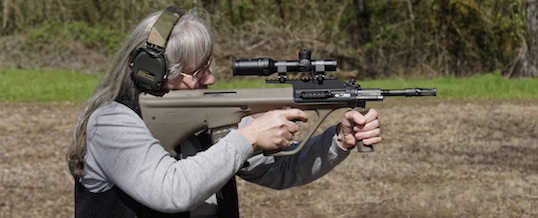
Putting your self protection plan into action
What do juicy, red onions have to do with your self protection plan? You might be surprised!
After my last two articles on threat assessment and prioritizing your self protection plan, I received an email asking for a little clarification. “I understand the idea of identifying threats, but how do I decide on the things I need to do to protect myself from each one?”, the reader asked.
That’s a great question. It’s easy to get bogged down in the minutiae of preparedness; that, I think, is why some people over-prepare in some areas (like having lots of guns) but under-prepare in others (like having good medical skills.) The reason? There are a lot of parts to keep track of!
Each threat is a project in itself
Let’s look at home protection against an invasion robbery, which is a pretty common concern today. Most people immediately think about the gun and shooting skills, but there are a lot of other things that are at least equal in importance. How about some sort of surveillance system that would alert you to the presence of unwanted people before they kick in your door? How about reinforcements that make it much harder for invaders to break through the door (or windows)? How about ways to alert the authorities to your need for help before they make it inside? How about ways to make it harder for the bad guys to maneuver once in the door? How about a safe room or area where you can barricade and defend yourself, and a plan to get in and secured before the criminals ever make it into the house?
After all that you can think about the guns and shooting, but even then there are a lot of aspects to consider. For instance, is your primary defensive tool in the event of a home invasion going to be a handgun or long gun? If a handgun, will it always be on your person or is it more likely to be stored/staged somewhere? If the latter, have you practiced retrieval under realistic conditions? Does the storage system prevent unauthorized access for all those times when you’re not shooting it out with the bad guys? What about the actual shooting skills: have you trained in the skills necessary to shoot around or past innocents? How about dealing with furniture, walls, and other items in the environment as either obstacles or cover? Speaking of furniture, how about furniture selected and position specifically to absorb bullets and keep you safe?
Overwhelming? It can be!
It’s a lot to think about, isn’t it? Possibly overwhelming for some people, especially when you combine it with all the other details for all the other threats you need to manage. It’s no wonder that so many people resort to the security blanket of buying a gun and doing little (or nothing) else.
I’ve found it helpful to break down a protection plan into three easy parts:
- Deterrence: mitigating danger without your direct intervention, or something that repels the danger before it reaches you.
- Detection: alerting you to the presence of, or allowing you to find, danger before it becomes an immediate hazard.
- Response: the tools and activities you use to directly engage or repel danger that has become an immediate hazard to your life or safety.
Look at personal security like an onion
Take, for instance, your home: deterrence includes those things like the fence around your property which keeps people (and vicious dogs) from easily getting to your door. It’s also the lights you use at night and the lack of shrubbery under windows which make burglars pick a neighbor’s house. How about the reinforced door jambs and window bars which keep people from easily getting inside? Yes, those too.
Detection would involve the door and window sensors that alert you when someone tries to gain entry; the video surveillance system which allows you to see people coming up to your door; and (doing dual duty) the motion-sensing lights which come on when someone is prowling around at night. (Yes, some things can serve multiple purposes!)
Response covers the tools you use (like the firearm, the flashlight, and the cell phone.) Tools help you to contact help and to fight the person who makes it past your deterrence and detection features. Response also includes your defensive shooting training, your range practice, and your emergency drills. (You do have emergency drills to practice your responses, right?)
For any given threat you should be able to identify preparedness measures which fit into each category. It’s important, also, that you cover each category for each threat. Deterrence, detection, and response work in concert — like the layers of an onion — to provide overlapping protection. To become an immediate danger to your health and safety each layer must be defeated, which gives you both a shield and advance warning so you can minimize the risk you face.
Look back at your self protection plan and for each item start thinking in terms of deterrence, detection, and response measures. Now you have specific action items — pick one and start working on it!
– Grant Cunningham
Now you can LISTEN to the blog!
- Posted by Grant Cunningham
- On July 15, 2016



